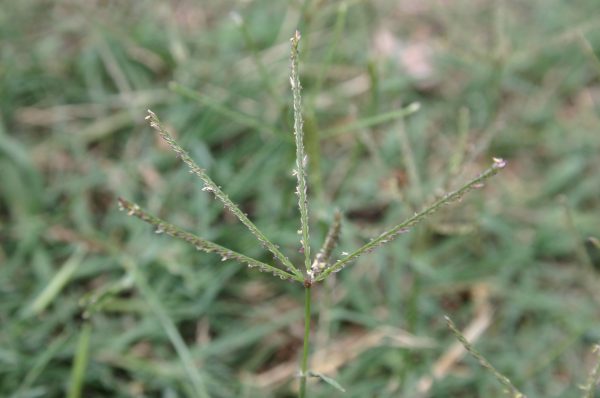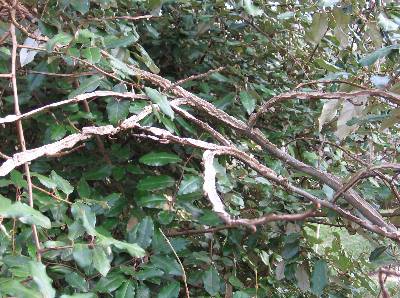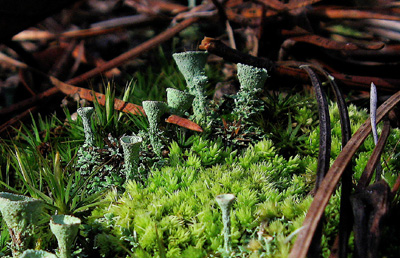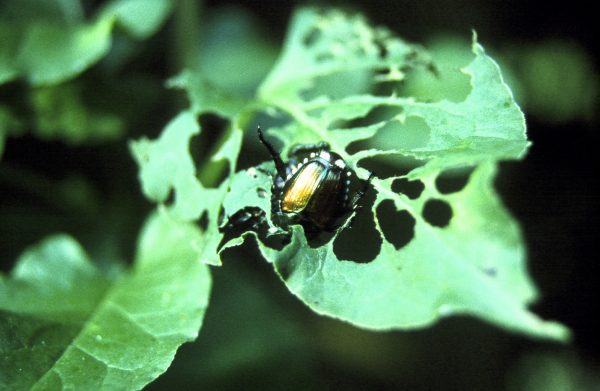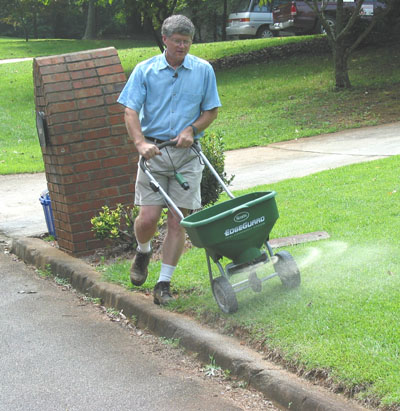Homeowner Q&A about Pine Beetles
The following was written by Terry Price, Georgia Forestry Commission.
See Pine Beetle Identification
How do I know if my trees are currently infested with bark beetles?
Trees that still harbor beetles will be characterized by green to yellow needles, tight fitting bark (hard to remove from the tree when struck by a hatchet or ax) and soft gummy pitch tubes. There are exceptions to these and homeowners should seek the advice of a forester to be sure trees are still infested.
What are my options for controlling an “active infestation” of Ips and southern pine beetles?
Removal of infested trees is the surest way to get rid of Ips and southern pine beetles. Other options include complete saturation of the entire tree trunk with a recommended insecticide. Trees can be sprayed standing or after being cut and sectioned on the ground. The entire bark area must be sprayed to the point of runoff. Spraying standing trees in urban areas is not generally recommended due to the possibility of pesticide contamination to nearby bird feeders and baths, swimming pools etc.
Another option is to fell trees and chip them on site and spread the chips for mulch. Infested trees should never be cut and stored on site for firewood unless the wood is covered with a plastic or vinyl tarp and sealed along the edges. From April to October infested firewood should be covered for at least 35 days to insure the death of the beetles.
During the cooler months from October to March, infested firewood should remain covered until after dogwoods have bloomed in the spring. Remember, Ips and southern pine beetles can complete a life cycle within 22-30 days respectively and control efforts must be done within this time frame.
What are my options for controlling black turpentine beetle infestations?
The black turpentine beetle is the only pine bark beetle that is confined to the lower six to ten feet of tree trunk. Except in extreme situations, the beetles do not mass attack trees as do the Ips and southern pine beetles. Rather, they tend to build up over a period of weeks thus allowing time for control by homeowners and landowners. Spraying the lower ten feet of trunk with a recommended insecticide can effectively control black turpentine beetles.
Do I need to remove trees that are already dead? (Those with brown needles or no needles.)
Dead trees from which bark beetles have emerged may harbor beneficial insects such as the checkered beetle. If dead trees are no threat to property, humans, or pets, they can be left standing to provide homes for checkered beetles and cavity nesting birds. Be sure dead trees are away from property lines, powerlines, houses, cars and children’s play areas. Stay away from dead trees on windy days as they often lose branches and upper trunk sections from the swaying.
Can I protect my healthy trees with an insecticide before pine beetles get them?
Healthy trees that are near an Ips or southern pine beetle infestation can be protected if the entire trunk area (bottom to top) is treated with a recommended insecticide. This requires expensive equipment capable of thrusting the insecticide up to tree top level. In urban areas where bird baths and feeders, swimming pools, cars and people are often present, spraying standing trees is not a good idea. Although it’s effective in preventing bark beetle attacks, it is often impractical.
Many tree companies offer to spray standing pines up to a height of about ten feet. This is only effective against the black turpentine beetle and will not provide protection against Ips and southern pine beetles. Also, many tree companies advertise the injection of systemic chemicals to control or prevent bark beetles. Although the Environmental Protection Agency (EPA) has allowed the registration of systemic insecticides for control of pine bark beetles, their effectiveness is often contraindicated. Stay with the proven methods even though they may be more costly and labor intensive.
Will chips from recently ground pine trees attract pine beetles to my yard?
Yes and no! The black turpentine beetle is justly named because it is highly attracted to the odor of fresh pine tree resin. Sometimes green pine chips may heighten the possibility of a black turpentine beetle attack and to a lesser extent attacks from the other bark beetles. To be safe, pine chips should be used only in and around hardwood areas.
Must I have the stumps ground when I remove an infested tree?
Black turpentine beetles like the smell of fresh pine resin and a green stump is a prime target for them. Stump grinding is preferred when green pines are cut. If not, the stumps should be sprayed with a recommended insecticide unless there are no more pines left in the yard.
Does pruning attract pine bark beetles?
It is best to prune pine trees when pine beetles are inactive. Pruning trees between November and February is preferred to spring and summer pruning. If pruning can’t be postponed, the pruning wounds should be coated with a tree wound dressing to reduce the possibility of a bark beetle attack.
Climbing spurs used by many tree surgeons and arborists when pruning can attract pine beetles. If pine beetles are on the rampage it is best to delay any pruning until the outbreak subsides. This would apply to powerline pruning as well.
What should I do if my neighbor has trees infested with pine bark beetles?
It is always a good practice to be aware of bark beetle activity or tree lightning strikes in your neighborhood or area. Pine bark beetles can devastate neighborhoods or woodlands and do not respect property lines. Quick action to rid an area of beetles is a must. Be sure your neighbors are aware of the situation.
What are my responsibilities toward my neighbors if I have an active bark beetle infestation on my property?
Once you have been educated to the potential hazard of your infestation spreading to nearby properties, you may be liable for negligence by failing to remove the beetle hazard(s). Neighbors need to work together to solve a community problem.
Are there any federal and state tax relief options for homeowners and timber owners plagued by pine bark beetles?
Yes! The IRS recognizes the southern pine beetle as a casualty agent. This means homeowners can minimize losses provided they document and report the losses in an appropriate manner approved by the IRS. Generally, homeowners can have the property appraised with and without the trees (those killed by beetles). The depreciation in property value due to missing trees is the amount of the casualty allowed by the IRS. Timber growers may qualify for an involuntary conversion. Under this rule, landowners who salvage killed trees may be able to reinvest the income into “like-kind” property within 3 years and postpone taxes.
Homeowners and timber owners need to refer to IRS publication 547, Casualties, Disasters and Thefts. This publication is available free of charge by calling 1-800-TAX-FORM.
What type of assistance does the Georgia Forestry Commission provide to homeowners in dealing with pine bark beetles?
The Georgia Forestry Commission provides technical assistance to any homeowner/landowner or neighborhood association upon request. During community wide or statewide beetle outbreaks, a GFC representative can provide a program to citizens about how to recognize and control pine bark beetles. It can also publicize and coordinate community wide suppression activities by training various tree companies, arborists and timber harvesters on proper control procedures. As a state agency the GFC does not remove trees nor provide financial assistance to citizens for tree removal. Contact the Georgia Forestry Commission by calling your local county office or 1-800-GA TREES or go online at www.gatrees.org



